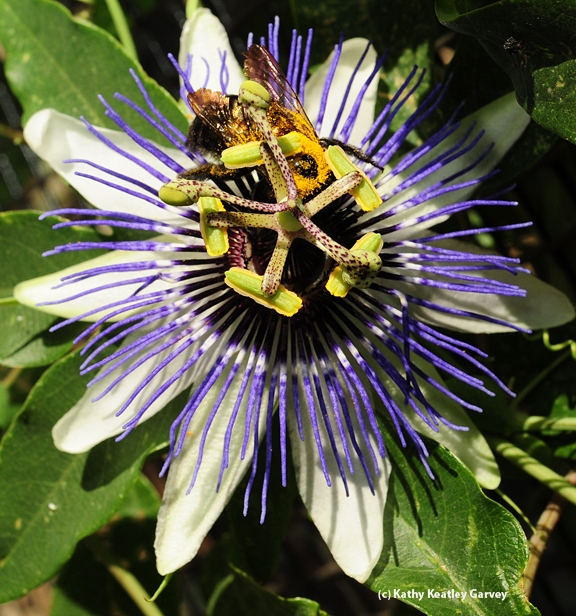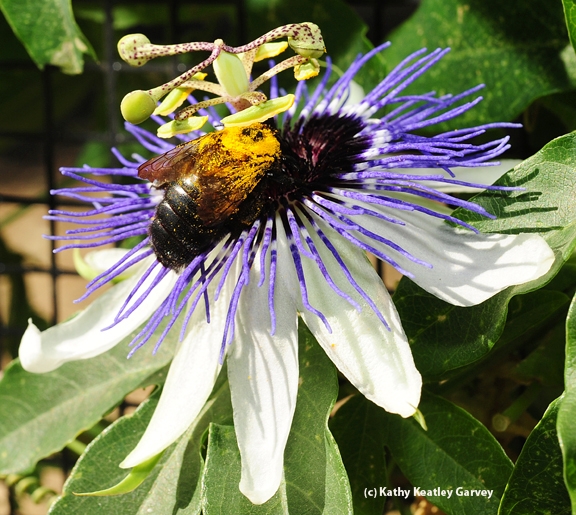When you visit the Häagen-Dazs Honey Bee Haven on Bee Biology Road, University of California, Davis, be sure to check out the passionflower vine clinging to the fence.
You'll see female Valley carpenter bees (Xylocopa varipuncta) seemingly speckled with gold dust. This is actually a thick coat of pollen from their foraging ventures. Underneath that gold pollen, the females are a solid black. (The males of this species are blond with green eyes.)
One of the haven's founding volunteer gardeners, Mary Patterson, a retired cattle rancher and businesswoman who was honored in 2009 as a "Friend of the College" (UC Davis College of Agricultural and Natural Resources), planted the vine there.
The vine is doing quite well.
So are the carpenter bees.
Passionflower blossoms range in color from white to lavender to red, depending on the varieties. This one sports lavender blossoms.
Passiflora is the larval host plant of the Gulf Fritillary butterflies, Agraulis vanillae, a showy reddish-orange butterfly nicknamed "The Passion Butterfly." We spotted no eggs, caterpillars or chrysalids on this particular vine, however.
The Häagen-Dazs Honey Bee Haven, planted in the fall of 2009, provides a year-around food source for the nearby bees at the Harry H. Laidlaw Jr. Honey Bee Research Facility and other pollinators. It also serves to raise public awareness on the plight of honey bees, and as an educational resource to help visitors decide what to plant in their own gardens.
Maintained by the UC Department of Entomology and Nematology, it's open year around, from dawn to dusk for self-guided tours. Admission? Free. But if you want a guided tour, there's a nominal fee of $3 per person. For more information, contact Christine Casey at cacasey@ucdavis.edu.
Attached Images:

